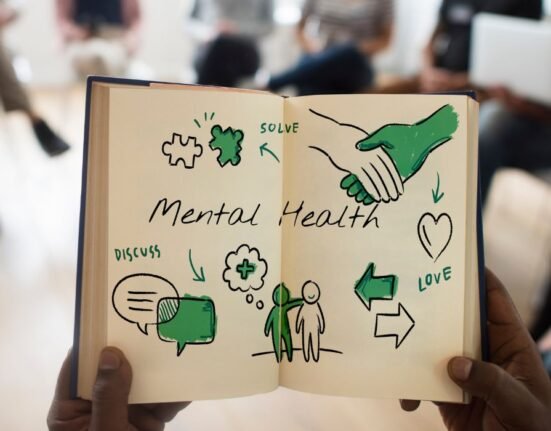Aren’t you always a kid at heart? Inner Child is that playful, notorious, vulnerable part of yourself. As innocent as it is, your inner child endures the traces of every happening, good or bad, joyful or hurtful. It carries earliest memories, emotions and experience. As pure as the term inner child sounds, it has undoubtedly been imprinted with the traces of early neglect, abuse, unresolved issues, unexpressed emotions which finds its way to adulthood. The damage to our innocent self is sometimes manifested as emotional wounds in adulthood. It can impact our relationships with others, self-esteem, well-being and overall functioning.
What to do in such a situation? Well, it is important to first recognise, however grown up you think you are, the inner child is still a kid. A kid, who might be scared and afraid. Acknowledging and addressing these wounds would mean you are putting an effort towards healing your inner child. It is again important to make the inner child feel comfortable by engaging in self-love, showing compassion and resilience.
It is a journey. And the journey’s characteristics range from painfulness to insight. Here are a few action-oriented ways which might be helpful in your journey to healing the inner child
- Write a letter: As kids, all of us have written letters. Be it as a leisure activity or school homework. It is time to do that again! Write a letter to your inner child. It is quite natural to come across the question, “what should I write in the letter?”. How about beginning like an informal “Dear myself”. The child is someone close to you, it is yourself! Write the letter with love, understanding and validation. Ask for forgiveness or show forgiveness, whichever you think is necessary. Make sure to include that you are and will be there, no matter what.
- Creative Expression: Which was your favourite activity as a kid? It could be anything you liked or enjoyed engaging in. To give some examples, drawing, dancing, singing, or if not any, journaling. The main motive here is expressing yourself. And the reason behind taking your favourite activity is that it’ll be easier to express via the favourite activity.
- Inner child Dialogue: Imagine your inner child is sitting right in front of you. Talk to yourself! Have a dialogue. Try to understand their needs and fears. This activity will make sure that you and your inner child are on the same page. If imagination is not a point of comfort for you, journaling is another option. Journaling the dialogue brings about the same benefits.
- Mirror Work: Stand in front of the mirror and repeat affirmative sentences. Replace negative constructs with more hopeful ones. Mirror work can help you move beyond these narratives and work on developing a loving connection with yourself. Godfrey recommends looking deeply at yourself in the mirror each day and making a powerful healing statement, such as: “I matter.”, “What I want matters.”, “I will not stay silent.”
- Reparenting Technique: Practice reparenting techniques by nurturing yourself in ways you may have lacked as a child, such as setting boundaries, self-care, and positive self-talk. This will bring about a sense of comfort and endorse a feeling of being understood. It is this care and love that’ll bring about a positive impact.
- Inner Child Meditation: Practice guided meditations or visualisations. Where you can imagine connecting with your inner child, offering reassurance and support.
- Forgiveness Practice: As you are going through the healing process, it is important to Practise forgiveness, not just towards yourself but also towards others for past hurts and traumas. Practising forgiveness will allow yourself to let go of resentment and move forward with compassion.
- Emotional Release: As mentioned earlier, this can be a painful process. There might be a lot of pent up emotions. Those suppressed emotions need a way out. Allow yourself to explore those emotions in whichever acceptable way you think they need to be expressed. Crying, screaming into a pillow, or engaging in cathartic activities are the most common and helpful ways.
- Inner child workshop/therapy: Consider attending workshops or seeking therapy specifically focused on inner child healing to explore and process childhood wounds in a supportive environment.
- Prioritise yourself: Prioritising means, taking out “me time”, identifying your needs and communicating them, checking on your physical, emotional and mental capabilities, setting boundaries, taking time for personal growth.
Healing your inner child is a courageous and empowering journey. It requires patience, practice, compassion and commitment. By taking action-oriented steps to nurture and heal your inner child, you can cultivate a deeper sense of self-love, resilience, and emotional well-being. It involves reclaiming the lost or wounded parts of yourself and nurturing them with love and compassion, ultimately leading to greater wholeness and inner peace. Remember that healing is a process, and every step you take towards nurturing your inner child brings you closer to inner peace and wholeness. After all, Healing doesn’t always have a definite end. It’s often more of an open-ended journey.
References +
- 8 Ways to start Healing your inner Child. (2023, February 13). Healthline. https://www.healthline.com/health/mental-health/inner-child-healing#acknowledge
- Pedersen, T. (2022, November 16). 10 exercises to Heal your Inner Child. Psych Central. https://psychcentral.com/health/how-to-heal-your-inner-child#self-compassion
- TIMESOFINDIA.COM. (2024, January 19). Unlocking inner Joy: 10 powerful mechanisms to heal your inner child. The Times of India. https://www.google.com/amp/s/timesofindia.indiatimes.com/life-style/relationships/love-sex/unlocking-inner-joy-10-powerful-mechanisms-to-heal-your-inner-child/amp_etphotostory/106992599.cms













Leave feedback about this